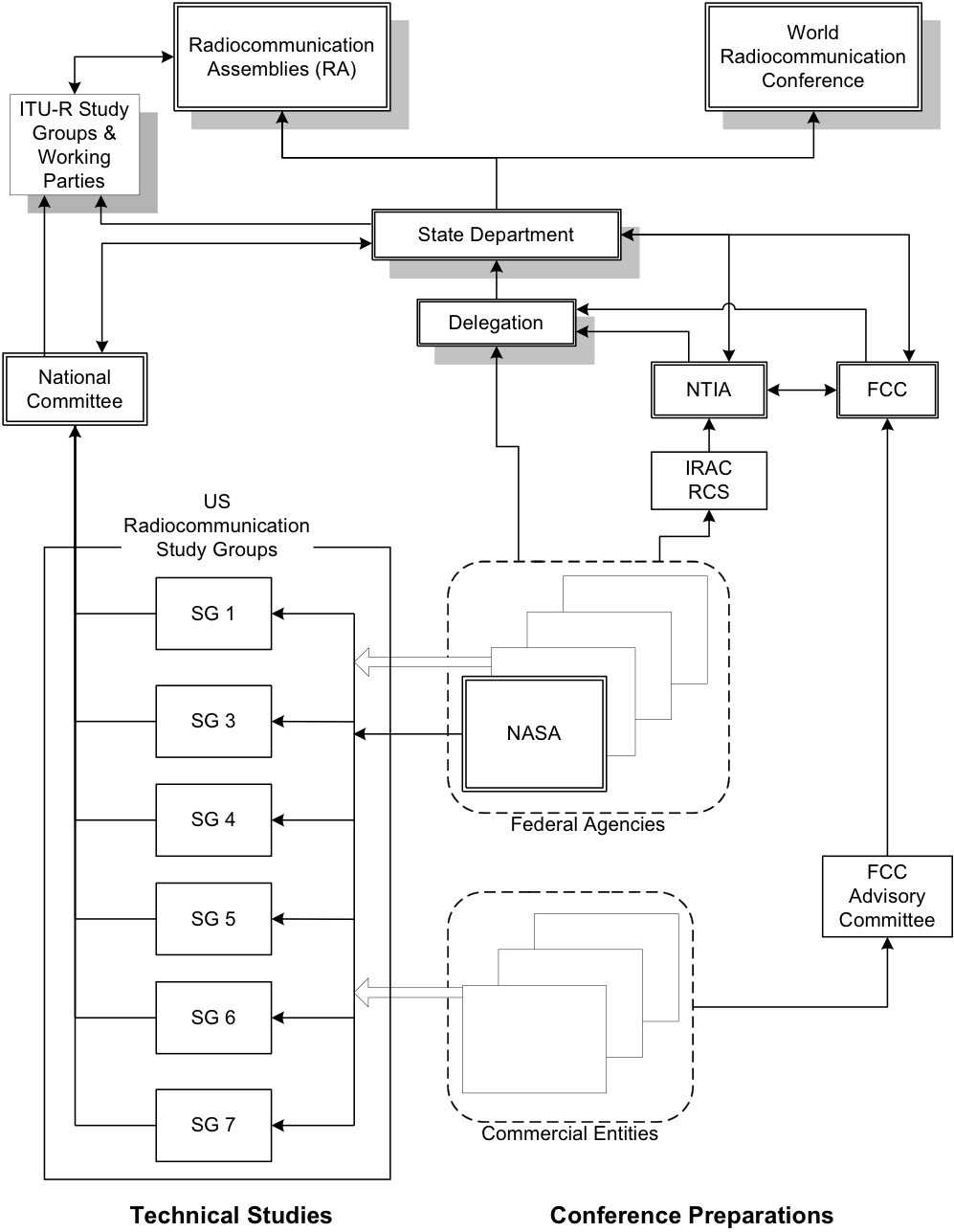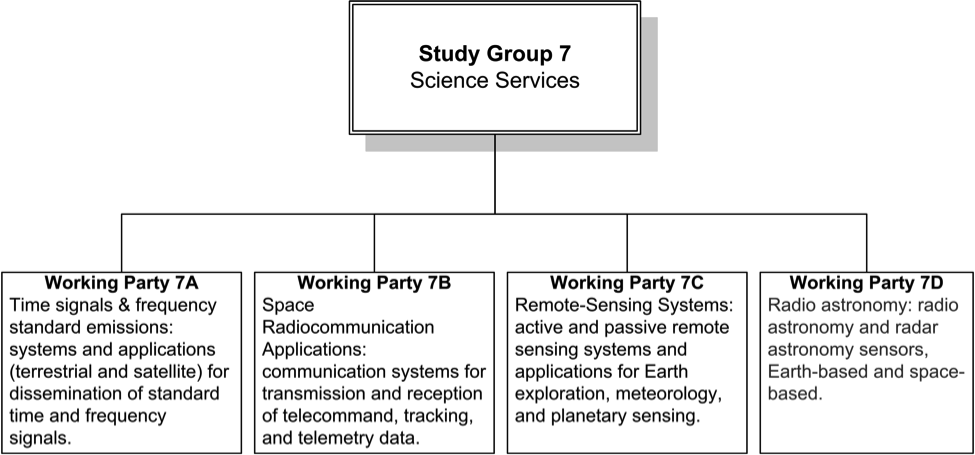
Procedural
Requirements
Effective Date: September 22, 2014
Expiration Date: September 22, 2026

|
NASA Procedural Requirements |
NPR 2570.1C Effective Date: September 22, 2014 Expiration Date: September 22, 2026 |
| | TOC | ChangeHistory | Preface | Chapter1 | Chapter2 | Chapter3 | Chapter4 | Chapter5 | AppendixA | AppendixB | AppendixC | AppendixD | AppendixE | AppendixF | AppendixG | AppendixH | AppendixI | AppendixJ | AppendixK | AppendixL | ALL | |
K.1 The relationship between the U.S. and international spectrum management structures is shown as Figure K-1. The figure depicts two paths. One is the technical path where studies of radio matters are conducted; the other depicts the preparations within the United States leading to a WRC.
K.2 Conference preparation follows the flow as shown in Figure K-1. NASA, as well as other Federal agencies, inputs proposals to the IRAC Radio Conference Subcommittee (RCS). Upon approval within the RCS, proposals are then coordinated with the FCC Advisory Committee for acceptance by the private sector. In a similar fashion, private sector proposals are coordinated through the RCS for approval by the Federal sector. Proposals are ultimately reconciled between the FCC and NTIA before going to the U.S. Department of State for submission to the conferences.
K.3 NASA has significant technical interests in the work of the Study Group and associated Working Parties concerned with the science services (Study Group 7 and Working Party 7A, 7B, 7C, and 7D), which support Federal and commercial space programs (See Figure K-2). In general, technical studies of current interest are supplied to the United States Study Group or cognizant Working Party by member agencies. When approved by the Study Group or Working Party, they are forwarded to the National Committee of the U.S. Department of State's International Telecommunication Advisory Committee for the Radiocommunication Sector (ITAC-R) for national policy review prior to being submitted by the State Department to Radiocommunication Assemblies or to a special conference preparation study group. The results of these studies provide the technical bases for Radiocommunication Conferences.
K.4 In addition to the science services, NASA also contributes to the work of Study Group 1 (Spectrum Management), Study Group 3 (Radiowave Propagation), Study Group 4 (Satellite Service), Study Group 5 (Terrestrial Services), and Study Group 6 (Broadcasting Services) to assist the commercial industry in better meeting the long-term communications and remote-sensing requirements of NASA, as well as to protect and promote NASA use of allocated frequency bands.
 Figure K-1 U.S. and ITU Spectrum Interfaces
Figure K-1 U.S. and ITU Spectrum Interfaces
 Figure K-2 Radiocommunication Study Group 7 Structure
Figure K-2 Radiocommunication Study Group 7 Structure
| TOC | ChangeHistory | Preface | Chapter1 | Chapter2 | Chapter3 | Chapter4 | Chapter5 | AppendixA | AppendixB | AppendixC | AppendixD | AppendixE | AppendixF | AppendixG | AppendixH | AppendixI | AppendixJ | AppendixK | AppendixL | ALL | |
| | NODIS Library | Legal Policies(2000s) | Search | |
This document does not bind the public, except as authorized by law or as incorporated into a contract. This document is uncontrolled when printed. Check the NASA Online Directives Information System (NODIS) Library to verify that this is the correct version before use: https://nodis3.gsfc.nasa.gov.